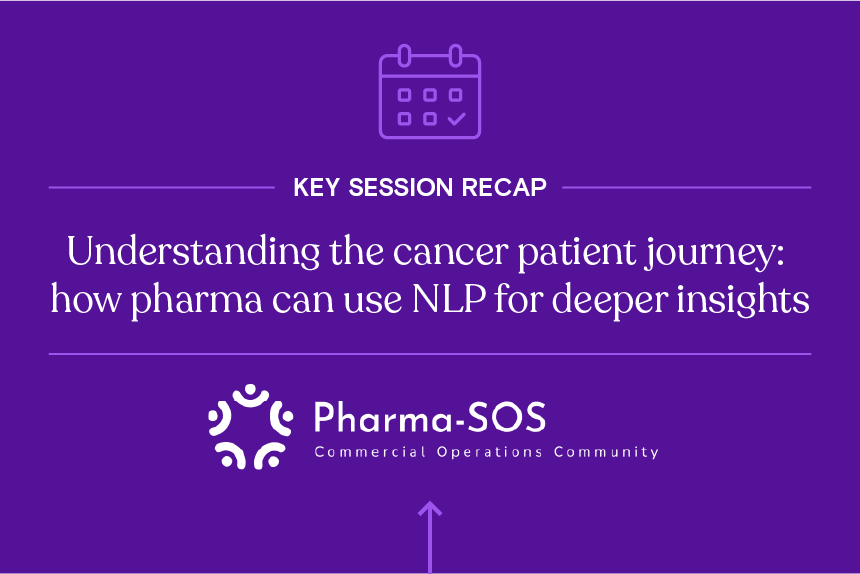I had the pleasure of visiting Louisville, Kentucky for the 2022 Annual Pharmaceutical Management Science Association (PMSA) Conference to show off the Passport Analytics Suite and connect with other pharmaceutical leaders.
Weren’t able to attend? I’ve got you covered with a recap of the biggest themes from the event, which include:
- Artificial intelligence (AI) & machine learning (ML) for predictive analytics
- Patient centricity
- Omnichannel marketing
AI/ML for predictive analytics is a fast-emerging trend in the pharma industry
Everywhere you turned, it seemed like people were talking about the different ways to leverage AI and ML in pharma.
AI and ML are no longer buzzwords, but rather tangible tools that pharmaceutical companies are actively leveraging for predictive analytics to improve drug discovery, understand the patient journey and identify the right patients and providers for treatments.
By leveraging real-world evidence built on anonymized patient-level data, you have more data to work with to build sophisticated algorithms that go beyond the simple decision trees that shaped early AI models.
With more advanced data science and technology at your fingertips, you can better understand the next best action to take throughout the product lifecycle. Plus, it allows you to make changes to your strategies based on what the data shows in real-time.
Pharma is embracing patient centricity
While patient-centric care has been a key focus for providers and health systems over the last decade, pharma is also embracing the concept. Gone are the days of a one-size-fits-all approach for drug development and treatment options. Patients want personalized treatments that meet their unique needs.
Patient journey mapping, which tracks a patient’s experience over the course of an episode of care, is an important tool for pharmaceutical companies looking to embrace a more patient-centric approach in their commercialization efforts.
Patient journey mapping is especially important for those working in the rare disease or oncology space. These patient cohorts tend to be smaller and require personalized therapeutic options such as cell or gene therapies. By mapping the patient journey, you can better understand line of therapy regimens to help patients get the right treatment faster and ensure the providers are aware of the different therapeutic options available for each patient.
Additionally, by understanding patients’ interaction with the healthcare system – sometimes even before they are diagnosed – you can analyze what resources you might want to offer patients as part of your commercialization efforts.
For example, many patients turn to Google for more information on diagnosis and treatment options, so some pharma companies are working to develop HIPAA-compliant communities and online resources to help patients take a more active role in their care journey and understand potential treatment options available to them.
Many pharma companies are also looking at offering services to improve medication adherence. Poor medication adherence can lead to substantial worsening of disease and increased health costs. To address this issue, pharma companies are looking to provide educational resources to help patients better understand their disease, cover travel services to and from doctor’s offices to help fill prescriptions and offer financial resources to those who may struggle to afford needed medication. By developing medication adherence programs focused on the patients, pharma companies can help improve patient outcomes.
Omnichannel marketing is the future
Omnichannel marketing was a hot topic for our team at the show. No longer can you rely on one channel to reach your audience. And thanks to more patient-centric approaches, marketers need to reach both healthcare professionals and patients across different mediums.
Omnichannel marketing allows you to do just that. Omnichannel marketing is a strategy that leverages multiple different marketing channels to provide a consistent and personalized experience for prospects and customers.
With so many different marketing channels out there, you need data from both internal and external sources, coupled with predictive analytics, to determine which channels and strategies are the right ones to reach prescribers and patients. ML models also allow you to understand the next best action for your omnichannel strategy, as well as allow you to adjust your strategy on the fly based on what’s working and what’s not.
Additionally, everyone wants personalization in their marketing communications. Patients and healthcare professionals are too busy to engage with content that is not relevant to them. Omnichannel marketing is one way you can better personalize your marketing communications to ensure you’re delivering the right message, at the right time via the most appropriate content type and channel.
Our Passport Promotional Analytics product is designed to help optimize omnichannel execution. With Passport Promotional Analytics, you can achieve peak revenue and profit by improving customer segmentation, maximizing the impact of promotional tactics and effectively allocating omnichannel budget.
As more marketing priorities shift and new channels emerge, omnichannel marketing isn’t going away anytime soon and we’re ready to help optimize your strategy to make data-driven decisions.
Learn more
My time at PMSA 2022 left me feeling energized by all the new and exciting ways data and analytics are being used by pharmaceutical companies to optimize their commercialization strategies and deliver more personalized experiences.
With the right healthcare commercial intelligence, Definitive Healthcare can help propel the pharmaceutical company forward to improve the lives of millions of patients.
If you missed us at PMSA and want to explore how our intelligence can create new paths to commercial success, start a free trial today.





